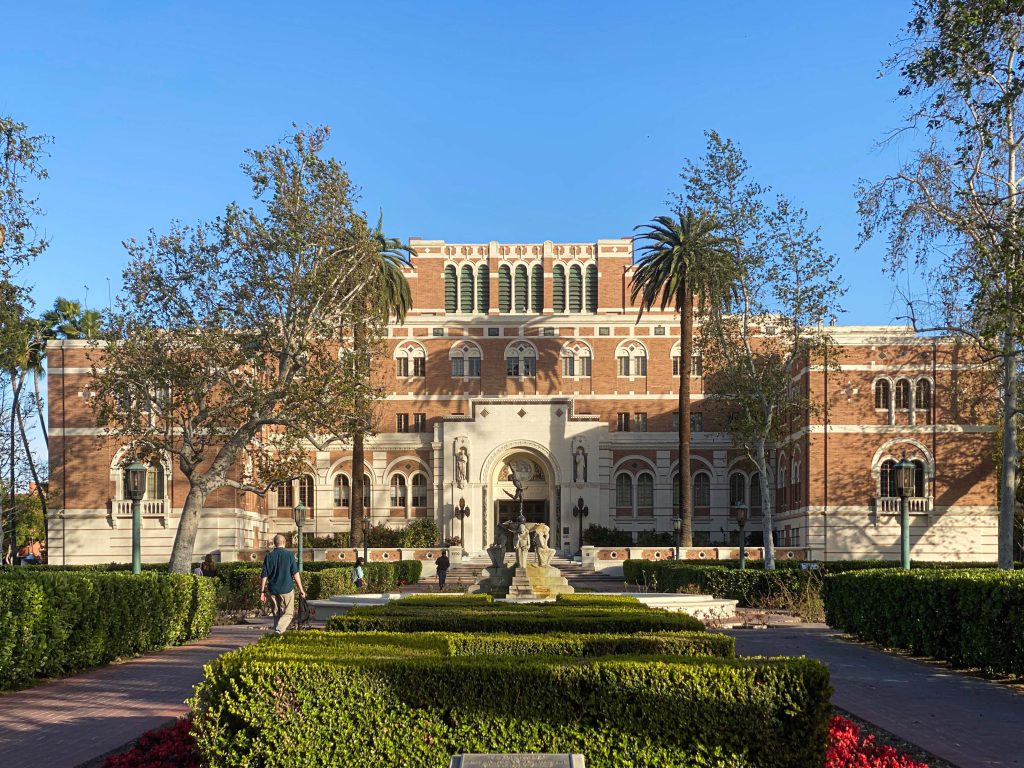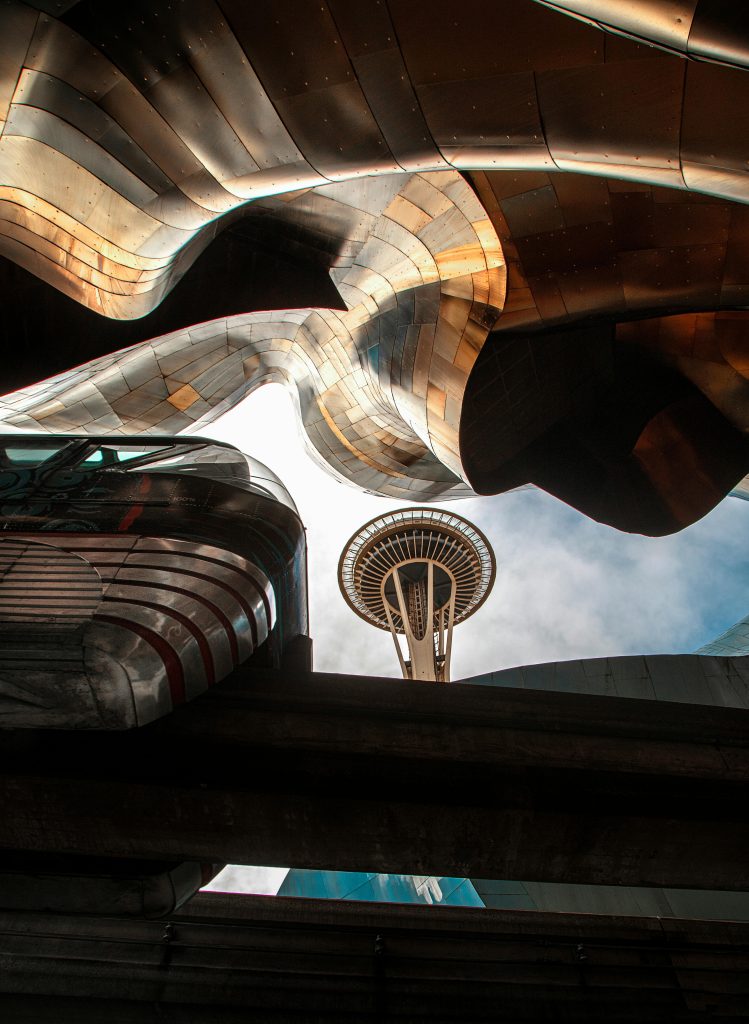Photo Credits: Various creators
Courses from culture (from content): How trends transform pop culture studies in higher education
By Stephen John Serrano

It’s everything, everywhere, all at once. Like the title of Daniel Kwan and Daniel Scheinert’s Oscar-winning film, popular culture exists in the everyday content we consume. It’s certainly inescapable in today’s media landscape. When it comes to studying the media that we consume, pop culture undergoes an academic lens.
“There’re very few aspects of modern life that are not, in one way or another, touched by popular culture,” said Henry Jenkins, an American media scholar and the University of Southern California provost professor of communication, journalism and cinematic arts.
Pop culture is a set of beliefs that are dominant or popular to the masses at a certain time — it is currently anchored by the proliferation of social media. From science fiction to Y2K fashion, you name it — it’s probably pop culture in some way and someone is teaching it in higher education.
Jenkins, who specializes in the study of pop culture as an academic said that “it’s vital that we study the forms of culture that are most pertinent at the current moment.”
Pop culture itself is a diorama of the world’s views. The subject imitates, mirrors and reacts to the real-life circumstances that it’s informed by. And as pop culture fluidly changes with the overarching ideas of mainstream culture, so do the courses being taught about it.
The roots of pop culture in colleges and universities in the US stem from the early 1920s when the study of film and cinema was established at the USC School of Cinematic Arts. Since then, classes related to pop culture have only skyrocketed in popularity and influence worldwide. The establishment of Bowling Green State University’s Department of Popular Culture in 1973 boosted the field of study, being the first to offer academic degrees in pop culture.
Now, it’s rare not to find a pop culture course offered at a college. Jenkins watched it “globally expand in the number of institutions offering them and expand in the range of media.”
Joanna Demers, associate dean for faculty affairs and a professor of musicology at the USC Thornton School of Music, received “snarky comments” at the beginning of her career from administration on the search committee about teaching pop culture, but “a lot has changed in 20 years” since then.

At universities across the country, recent trends show that courses related to music artists and social media are the pop culture courses that seem to be getting the most attention. Today’s courses emphasize the new shift of pop culture studies — previously consisting of traditional art forms but now representing the influence of media consumerism in the context of globalization.
With the release of his commercially successful third album, Harry Styles’s influence seemed to know no bounds, inspiring Texas State University to offer a history course in 2023 called “Harry Styles and the Cult of Celebrity: Identity, the Internet, and European Pop Culture.” The class examined the pop star’s image and artistry in relation to culture.
At New York University’s Clive Davis Institute of Recorded Music, “Topics in Recorded Music: Taylor Swift” was first introduced in 2022. The course discusses Taylor Swift’s cultural and political effects on “fandom, media studies, whiteness and power as it relates to her image and the images of those who have both preceded and succeeded her.”
And at Duke University, “Building Global Audiences” is a TikTok class currently being offered to students who have the motivation to be an active social media creator. Students are taught to engage their online audiences using marketing strategies that are anchored in learning about algorithmic trends.
Pop culture courses like these aren’t everyone’s cup of tea, however. These highly specialized classes teach students about the subject’s intersection with other fields of study through the examination of celebrities and their brands and the machinations behind social media stardom.
These courses have met their fair share of critics who cannot fathom that a class on Taylor Swift truly gives any insight into teaching business and public relations. For some, pop culture is viewed as mere entertainment and not something to be studied seriously, much less academically, due to the tone in which it’s consumed — usually in the form of online memes, comedic or playful discourse and allusions to past media.
But like any subject, pop culture should be allowed to be critiqued and discussed in a space that fosters educational and productive conversations.
“Taking a critical stance to media is really important,” said Nancy Wang Yuen, a sociologist and a former Biola University professor. “Higher education brings a critical [view] because if you just consume media without filters, then you let it affect you.”
Yuen studies and teaches about Asian American culture in media, having expertise in its correlation to pop culture. To her, pop culture is undermined in how it’s perceived both academically and socially from a class standpoint.
When the first colleges and universities were founded in the US, class doors weren’t open to the masses. The only students enrolled were upper-class white men, so studying pop culture in higher education juxtaposes the core of what pop culture is entirely.
Yuen believes that those same traditional views uphold how pop culture is perceived as a profession and its role in shaping everyday life.
“I don’t think that teaching pop culture is as revered as if I wrote a summon all theoretical piece about representation and culture,” Yuen said. “In terms of the distribution of knowledge, the wider the distribution, it is sometimes looked down upon when it’s more accessible.”
With the creation of social media, pop culture has become increasingly egalitarian. Now more than ever people can shape and generate content with the possibility of it becoming viral and, consequently, a shared piece in the monoculture. The nature of how pop culture is disseminated — from anybody with a direct vein to the monoculture (in other words that phone on your app) — is crucial in understanding why the friction between the topic and higher education exists.
“A lot of cultural artifacts get promoted through the people, not just through celebrities or through people of higher positions,” Amanda Mae Perez said. “Popular culture is culture made for the working class — it’s made for the people.”
Perez, a recent graduate from the USC Annenberg School for Communication and Journalism, with a degree in communication and a minor in American popular culture, cites that she consumes pop culture through “participating in the conversations of whatever’s trending. Today it’s [Luca Guadagnino’s] Challengers, tomorrow it’s Dua Lipa’s Radical Optimism.”
The increased accessibility in higher education for more demographics coupled with the pervasiveness of social media users’ effects on pop culture are now reflected in the general education (GE) curriculum in college.
Demers teaches a GE class called, “Writing About Popular Music” at USC. She maintains that GEs like these have the potential to be incredibly fruitful for all students regardless if they study or are personally connected to pop music as a facet of pop culture. These courses offer a unique opportunity to reach a large audience of students.
“Any good GE class will introduce a set of tools to students that they can use to approach any type of art or any type of cultural production,” said Demers.
Angelica Mosqueda, a University of California, Berkeley senior majoring in media studies and theater agrees.
“A lot of folks who don’t engage with pop culture regularly need more of the historical and cultural context that surrounds it,” Mosqueda said. “Pop culture helps build your sense of media literacy and how you understand the content you consume.”
Mosqueda reiterates the importance of allowing pop culture studies to grow and thrive as a platform for positive human connection.
“Discussing what television shows they’re watching, memes they saw on Twitter, popular music on the radio — it’s all a means of connecting with your peers,” said Mosqueda.
The obtainability of pop culture is essential to how the masses connect, with the potential to become an echo chamber of information. These conversations are vulnerable to groupthink and the perpetuation of stereotypes — often simplifying nuanced ideas into a couple of concepts taken as truth. Criticism is supplanted by the zealotry of die-hard fans and cynics alike. The debate of pop culture exacerbates polarization.
“Popular culture does reproduce a lot of the biases and problems of society,” Yuen said. “That’s where higher education can come in and really explain why those things are happening and that it’s a part of a larger system.”
Pop culture is its own ecosystem with an audience and players drinking from the same waterhole of mass media.
Demers, Jenkins and Yuen concur that there is creative freedom in what subjects are being taught, especially in courses analyzing pop culture. Yuen said that in higher education “most faculty have a lot of creativity to design out courses.”
Demers points to non-traditional forms of education to supplement what is being taught in the classroom. She believes that cultural establishments like the Museum of Pop Culture or music conventions like PopCon, which was hosted at USC this year, have educational opportunities that classes will start to incorporate more.

The ever-changing nature of pop culture presents a unique challenge in higher education, though.
“Each new media of pop culture is going to have a wave of interest as it establishes itself in the university,” Jenkins said. “We don’t know what the media of the future are going to be right now.”
The pop culture courses with the most attention currently are based on the arts and entertainment. Newer trends show that discussions about emerging technologies, like artificial intelligence (AI), are taking more real estate in the collegiate space.
“AI and culture are already starting to take root at universities around the world. So that’s another growth area right now,” said Jenkins.
The rise of publicly available AI rose to prominence at the end of 2022 when OpenAI, an AI research organization, released ChatGPT. Since then, AI has proliferated across culture — seeing a rise in art creation and in classrooms for educational uses. This year, The Circle, a Netflix reality competition show, introduced open-source generative AI to play as a contestant in its sixth season.
As companies adopt more AI, the public infatuation is steering toward professionals and away from the playful muses of online audiences. Widespread interest in AI may diminish in the coming years, as the pop culture cycle continues with new trends.
“Pop is about the momentary thrill,” said music journalist Simon Reynolds in his book, Retromania: Pop Culture’s Addiction to Its Own Past. “It can’t be a permanent exhibit.”